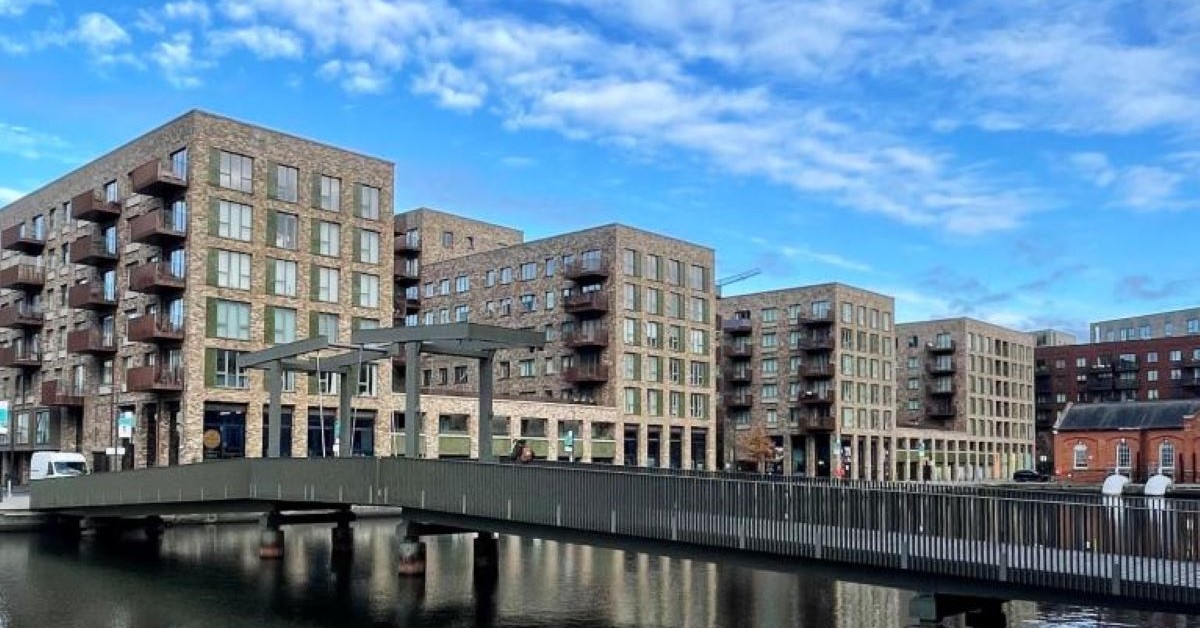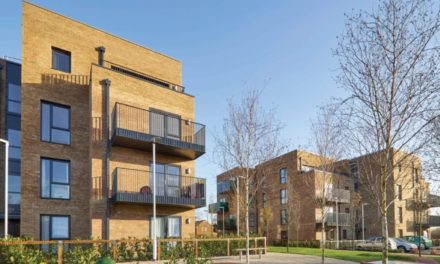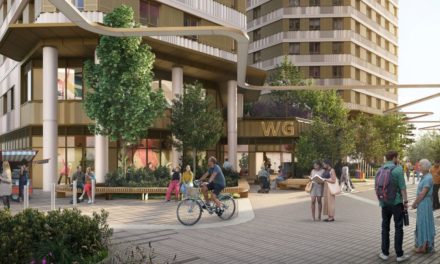New City Hall data published today reveal that London is leading the country in reducing energy use and emissions.
The Mayor’s London Plan, which sets out policies that address the global climate emergency and the housing crisis whilst providing a blueprint to make London a greener and healthier city, is helping to drive these achievements.
The plan’s net zero carbon target, which applies to all major planning applications, delivers 57 per cent higher carbon reductions in proposed new developments than required by national building regulations. Where developers cannot achieve net zero on-site, the Plan ensures they contribute funds to support other decarbonisation projects in London boroughs.
City Hall’s 2023 Energy Monitoring Report, published today, showcases the significant impact of the Mayor’s policies and highlights the vital role cities play when they are given the power to drive down carbon emissions, reduce energy costs, support supply chains and drive investment in clean technology. The report highlights:
- Emissions from proposed new developments were less than half of the CO2 levels required to meet national Building Regulations, saving over 32,000 tonnes. This is equivalent to 27,000 return flights from London to New York.
- Over a quarter of these savings came from energy efficiency measures, saving 8,552 tonnes of CO2 emissions. This is the equivalent of adding loft insulation to over 13,000 homes.
- 84 per cent of proposed developments in the capital, featuring over 20,000 homes and more than 1,000,000m2 of non-residential floor space, plan to use heat pumps for their heating system – the majority being large, centralised heat pumps supplying communal and site-wide heat networks. These heating systems service several buildings on a site.
- Ninety-two per cent of proposed developments will include solar panels. Combined, these panels will be the size of approximately 14 football pitches (with a cumulative area of 70,000 m²), totalling £21 million in new solar investment.
- More than 28,000 homes (91 per cent of all new homes) are set to connect to communal heat networks or area-wide district heat networks.
City Hall has also today published the London Energy and Greenhouse Gas Inventory, which looks at emissions in London between 1 January 2022 and 31 January 2022 and shows significant reductions in emissions in the capital in recent years:
- Since Sadiq took office in 2016, total emissions in the capital have fallen 21 per cent, significantly faster than the national average (16 per cent).
- London’s emissions have dropped 43 percent since their peak in 2000, despite a 23 percent increase in population.
- Emissions from transport are dropping faster in London than across the UK. Since 2016, London has had an 18 per cent drop in transport emissions compared with a 13 per cent drop nationwide.
Since 2016, the Mayor’s carbon offsetting policy has enabled £333 million to be secured for net zero projects across London. Local authorities will redirect this fund to projects in their neighbourhoods that will reduce London’s emissions. Projects include energy efficiency improvements and renewable energy installations on council-owned buildings such as schools and community centres.
Deputy Mayor for Environment and Energy Mete Coban said: “It’s fantastic to see London leading the country in reducing emissions and that the Mayor’s ambitious planning policies are bringing down energy bills and helping Londoners become more energy efficient.
“The Mayor has committed to making London a net zero-carbon city by 2030, and this new data shows we are progressing in the right direction.
“Sadiq and I will continue to work tirelessly to help boost London’s green economy to build a better, greener city for everyone.”
Helena Rivers, net zero lead, building and places, Europe and India, AECOM said: “The GLA’s energy monitoring report for 2023 highlights a significant milestone, with on-site CO2 emission reductions from new development averaging 57.4% beyond national building regulation standards.
“This progress underscores the effectiveness of the GLA’s leading London Plan policies aimed at achieving net-zero by 2030, which AECOM is proud to support in their implementation.
“The evolving policy landscape, including the Future Homes Standard and the Future Building Standard, will play a crucial role in this success.
“As we adapt to these new policies, it is essential to maintain our momentum in meeting the GLA targets whilst striving to ensure a sustainable future for London.”
© London West (powered by ukpropertyforums.com).
Sign up to receive our weekly free journal, The Forum here.















